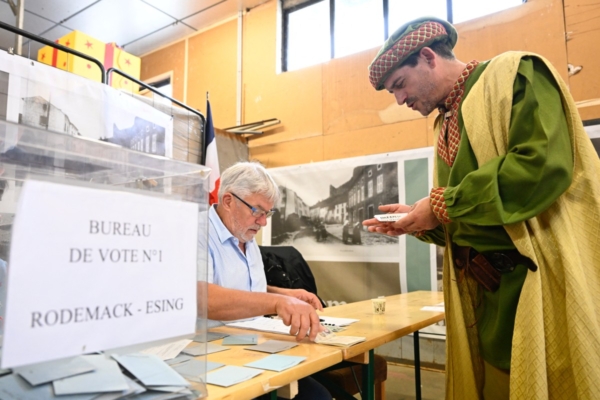On Sunday, June 30th, France held the first round of National Assembly elections, with the second round scheduled for July 7th. The final election outcome will depend on last-minute negotiations in the days leading up to the decisive vote.
This election, three years ahead of schedule, comes after President Emmanuel Macron’s “Rebirth Party” suffered a defeat to Marine Le Pen’s far-right party, the “National Rally,” in the European Parliament elections three weeks earlier. Macron then abruptly announced the dissolution of the National Assembly and set the dates for the first and second rounds of elections, a move that stunned observers.
According to reports from Reuters and the Associated Press, polling stations opened at 8 a.m. local time on Sunday, June 30th, and closed at 8 p.m. (some polling stations in smaller towns closed at 6 p.m.). The first exit poll results were released shortly after 8 p.m., with early official results expected later that night.
Exit polls indicated that Le Pen’s “National Rally” was leading in the first round of elections. Exit polls from Ipsos, Ifop, OpinionWay, and Elabe showed the “National Rally” winning around 34% of the votes, Macron’s Together Alliance expected to win 20.5%-23%, and the leftist New Popular Front projected to win about 29%.
With 49.5 million registered voters participating in the two rounds of voting, 577 members of the National Assembly, France’s most influential lower house of parliament, will be elected. While the first round results will reflect the overall mood of the electorate, they may not necessarily indicate the composition of the next parliament. Due to France’s electoral system, it is challenging to predict the distribution of the 577 seats in the lower house accurately, with the final results expected only after the second round of voting on July 7th.
Despite the possibility of the “National Rally” winning a majority of seats in the National Assembly, they may fall short of the 289 votes required for an absolute majority. This suggests that France may face a hung parliament and more political uncertainty.
Under France’s two-round voting system, the first round eliminates weaker candidates. If a candidate receives more than half the votes in the first round, they are directly elected, although this scenario is rare. Most constituencies require a second round of voting. Candidates who receive a vote share higher than 12.5% of the registered voter support in their area proceed to the second round. In the second round, the candidate with the highest vote count wins. The term for elected officials is five years. Sunday’s high voter turnout indicates a record three-way runoff in French politics.
For Macron, if Le Pen’s “National Rally” party wins a parliamentary majority in the new elections, his agenda may face challenges. However, Macron has stated that regardless of the outcome, he will continue to serve as President of France until the end of his term in 2027.
If the National Rally party leader, Jordan Bardella, ultimately becomes the Prime Minister of France, it would lead to a power-sharing system known as “cohabitation.” France has experienced three periods of “cohabitation” in post-war history, with the President and government coming from opposing political camps.
In many constituencies, it has already been confirmed that three candidates will advance to the second round. However, the leftist alliance has indicated that if their candidate ranks third in a constituency, they will withdraw in support of another candidate opposed to the far right. Macron’s centrist alliance has also stated that some candidates will withdraw before the final round to prevent the “National Rally.”
Mathieu Gallard, director of polling research at Ipsos France, stated that by 3:00 p.m. Greenwich Mean Time, voter turnout was close to 60%, compared to 39.42% two years ago, marking the highest turnout since legislative voting began in 1986.

